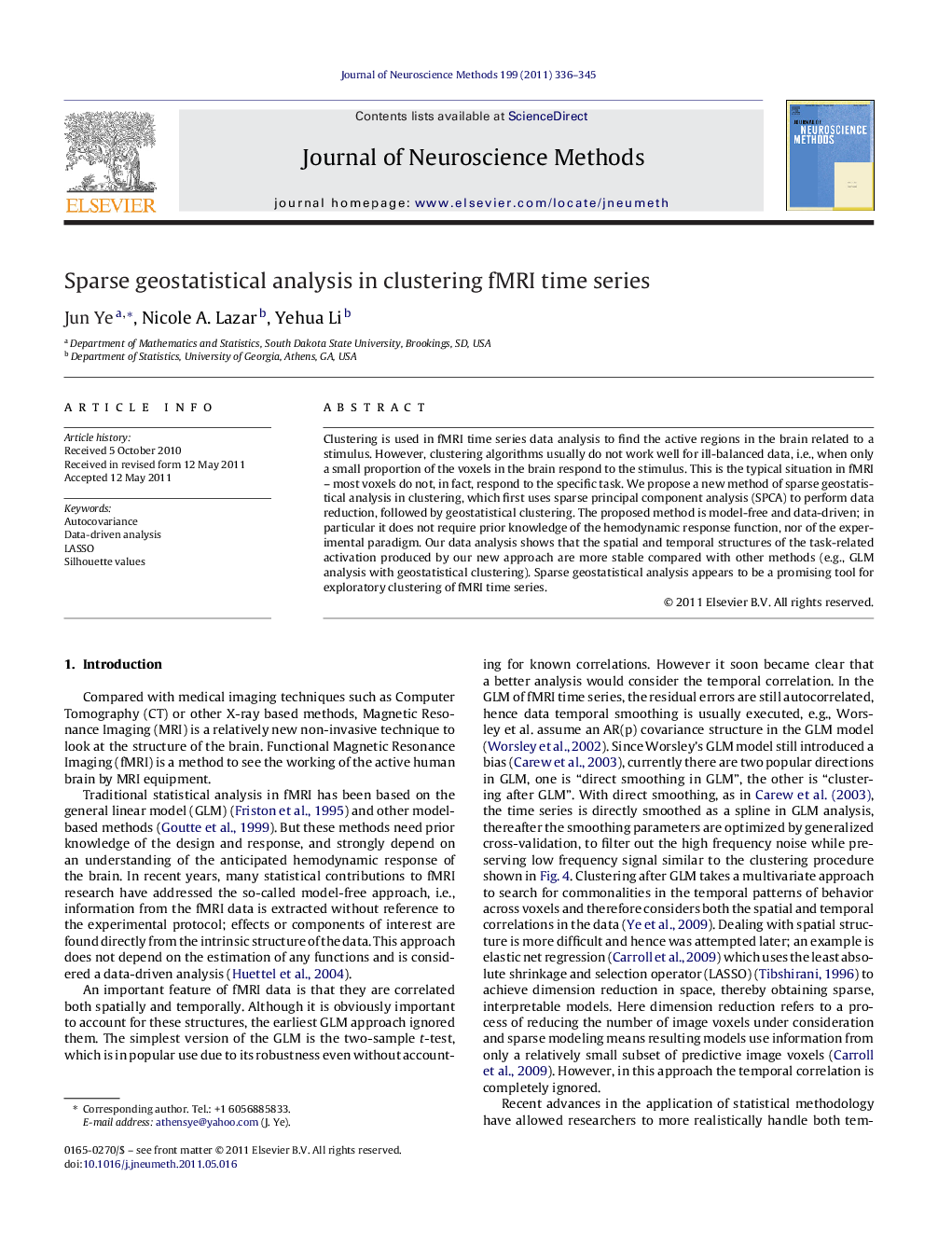| Article ID | Journal | Published Year | Pages | File Type |
|---|---|---|---|---|
| 6269657 | Journal of Neuroscience Methods | 2011 | 10 Pages |
Clustering is used in fMRI time series data analysis to find the active regions in the brain related to a stimulus. However, clustering algorithms usually do not work well for ill-balanced data, i.e., when only a small proportion of the voxels in the brain respond to the stimulus. This is the typical situation in fMRI - most voxels do not, in fact, respond to the specific task. We propose a new method of sparse geostatistical analysis in clustering, which first uses sparse principal component analysis (SPCA) to perform data reduction, followed by geostatistical clustering. The proposed method is model-free and data-driven; in particular it does not require prior knowledge of the hemodynamic response function, nor of the experimental paradigm. Our data analysis shows that the spatial and temporal structures of the task-related activation produced by our new approach are more stable compared with other methods (e.g., GLM analysis with geostatistical clustering). Sparse geostatistical analysis appears to be a promising tool for exploratory clustering of fMRI time series.
⺠Our proposed method can be considered as a two-step spatio-temporal cluster analysis. The first step is to reduce the ill-balanced data by SPCA, which screens out the voxels that are clearly not active during the experiment; the second step is to do the analysis using geostatistical ideas, which further refines the results and identifies the active voxels based on the temporal patterns of the data. ⺠When SPCA and geostatistical clustering are jointly used, this model-free approach not only changes the whole analysis process to be data-driven, but also offers a well-grounded framework for clustering.
